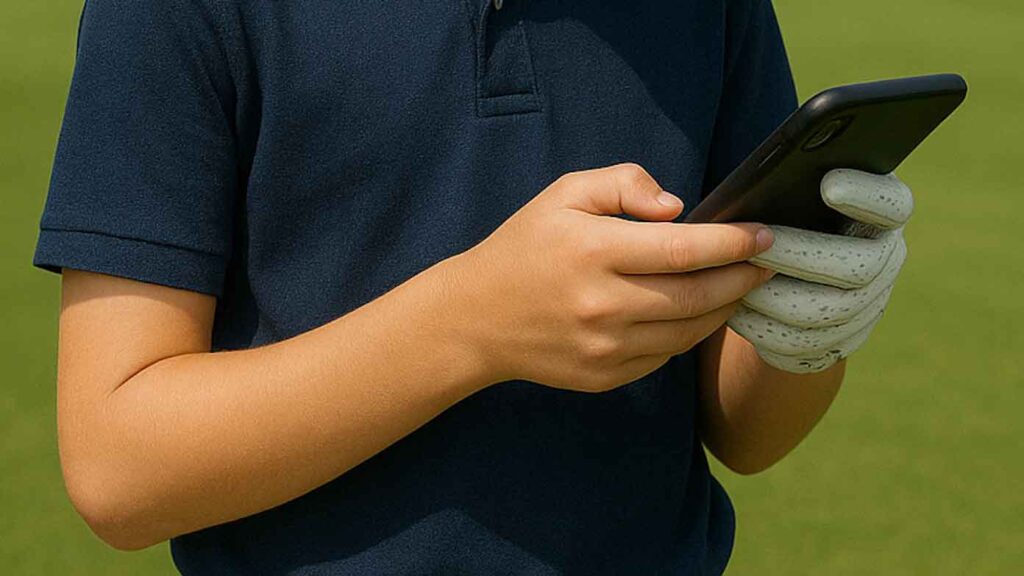The Impact of Smartphones on Junior Golf: A double-edged sword
As a sports reporter immersed in the world of golf, I’ve witnessed a variety of trends that have reshaped the landscape of the sport over the years. One of the most recent and controversial transformations is the increasing expectation for young golfers to manage their scores using smartphones during tournaments. This shift is not just a minor detail; it raises significant questions about the impact on youth engagement, mental health, and the very essence of the game.
The Joy of Screen-Free Golf
One of the most refreshing aspects of golf is its ability to provide a sanctuary away from screens. For parents like me, it’s a rare opportunity to bond with our children free from the continual barrage of notifications, messages, and updates. My 13-year-old son and I cherish our time spent playing together, where the only focus is on the game and our interactions. Unfortunately, the recent trend of integrating technology into junior golf is threatening to disrupt this cherished sanctuary.
A Troubling Trend
To my dismay, many junior tournaments now require players as young as 12 to keep score live on their smartphones. The rationale behind this move, touted by tournament directors, is that it enhances the player and spectator experience. However, the implications of such requirements are multifaceted and raise concerns regarding mental health, focus, and the traditional values that golf embodies.
The Mental Health Crisis and Technology
The adolescent mental health crisis in the United States has been widely discussed, with a growing body of research linking it to the pervasive use of smartphones and social media. In an era when 31 states have restricted cellphone usage in schools, it’s perplexing that a sport as venerable as golf would move in the opposite direction. The constant access to social media, news updates, and the distractions that come with smartphones can undermine a junior golfer’s focus and mental wellbeing.
The Distraction Factor
We’ve all experienced the distraction posed by a vibrating phone. It’s hard to ignore the siren call of incoming texts and alerts, which can draw even the most focused players into a vortex of distractions. If adults can struggle against smartphone temptations, one must wonder: how can we expect young golfers to resist the pull? The pressure to keep up with live scoring may lead to divided attention, ultimately affecting performance on the course.
The Justification for Live Scoring
Many tournament organizers argue that live scoring offers advantages, such as monitoring pace of play and creating an experience that mimics professional golf events. Greg Hubbard of U.S. Kids Golf insists that live leaderboards enhance the excitement and competitiveness of junior tournaments. While these are valid points, they must be weighed against the distractions they also introduce.
The Mixed Experience for Young Golfers
Feedback from young players paints a mixed picture regarding smartphone use during tournaments. For example, Mason Howell, the 18-year-old who made headlines for his U.S. Amateur win, has admitted to getting distracted by social media during competition. Similarly, Alexa Phung, a promising young player, recognizes that her peers often succumb to the temptation of texting during rounds. These distractions not only take away from the game but can also confuse players about their actual performance versus what they perceive from the leaderboard.
The Argument for Focus and Presence
Sebastian Martinez, a golf instructor, argues that watching leaderboards can negatively impact a player’s mental approach. The pursuit of birdies might lead to aggressive play that ultimately backfires. Instead, he advocates for a mindset focused solely on one’s own game. Similarly, Katie Burgoyne, a PGA teaching professional, emphasizes the importance of maintaining focus on each shot rather than becoming preoccupied with opposing scores. In a sport where every stroke counts, one’s concentration is paramount.
Cheating Concerns
The rise of smartphone usage in tournaments also presents new challenges regarding fairness. With no clear oversight, players could potentially engage in dubious practices, such as altering scores or sharing hole information through messaging apps. The integrity of the sport must remain intact, particularly in competitions where young athletes are developing their skills.
Alternative Scoring Methods
While smartphone scoring is becoming commonplace, several tournaments have opted for alternative solutions. Some events designate volunteers to manage scores, ensuring that players can focus solely on their game. This keeps the spirit of the game alive, allowing for a more traditional approach to scoring while maintaining accuracy and accountability. Moreover, the nostalgic practice of using paper scorecards should always be an option for those who wish to embrace tradition.
A Call for Change
Golf has long been celebrated for its rich history and traditions, providing a welcoming environment for players of all ages. As the sport faces new challenges in the digital age, the need for balance becomes stunningly clear. Requiring young players to manage smartphones during matches detracts from the core principles of accessibility, focus, and presence that golf promotes.
In conclusion, as we navigate this new era in junior golf, we must strive to maintain the integrity and joy that the game offers. The conversation is ongoing, with many parents, coaches, and players weighing in on how best to adapt without sacrificing the fundamental virtues of the sport. By prioritizing an experience that fosters growth, connection, and mental well-being, we can ensure that junior golfers thrive, both on and off the course.
By remaining vigilant about the influences of technology and advocating for policies that enhance rather than detract from the game, we can help cultivate a new generation of golfers who appreciate both the traditions of the sport and the challenges of the modern world. Golf should remain a reprieve from the screen, a haven of focus and personal growth, and a reminder of the beauty of being present.
